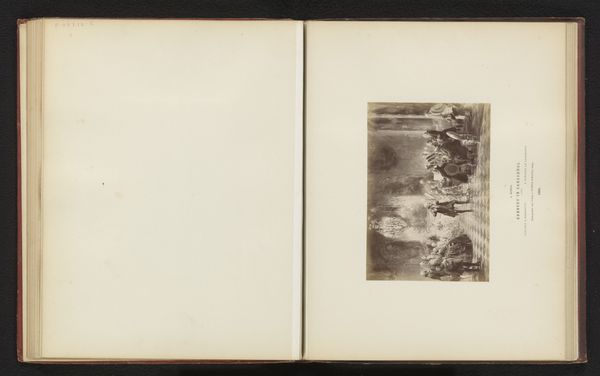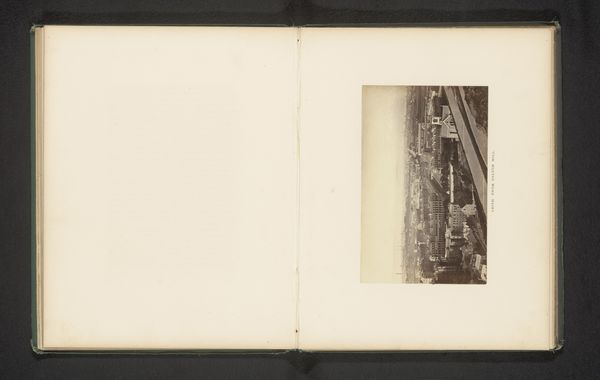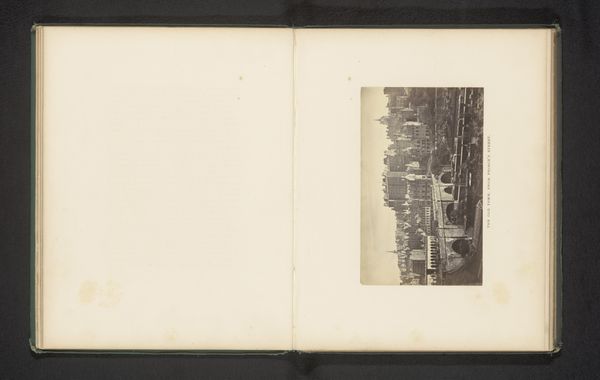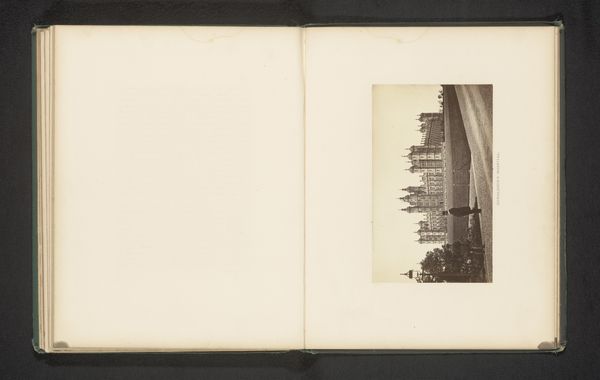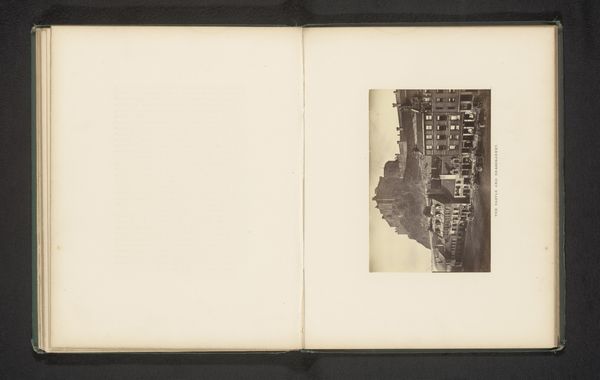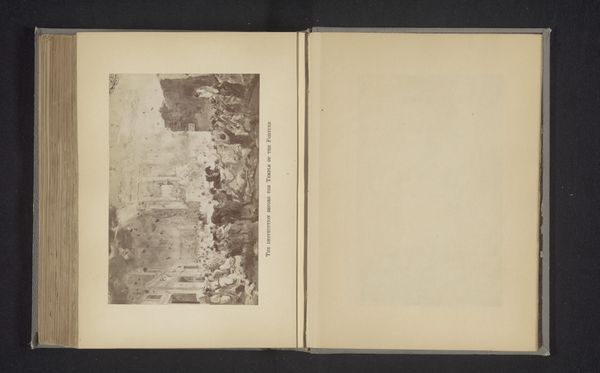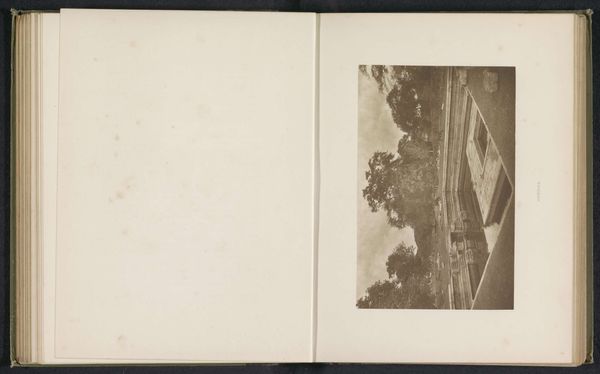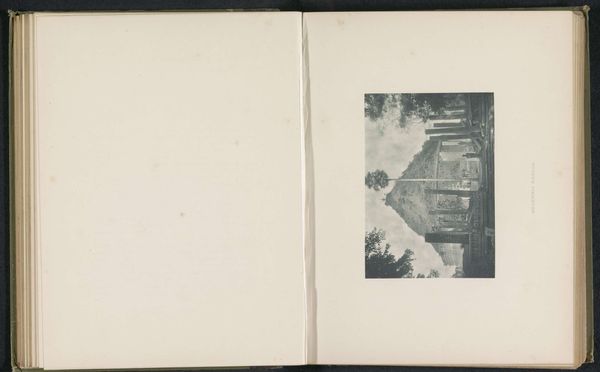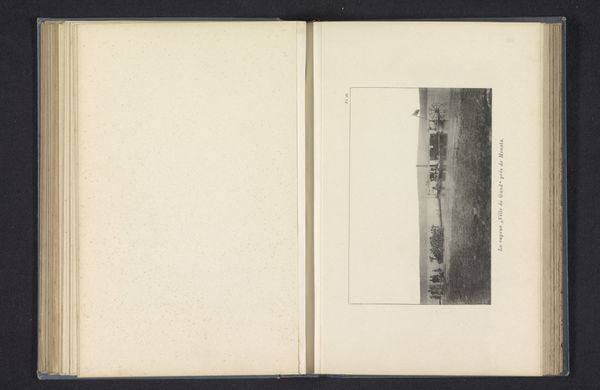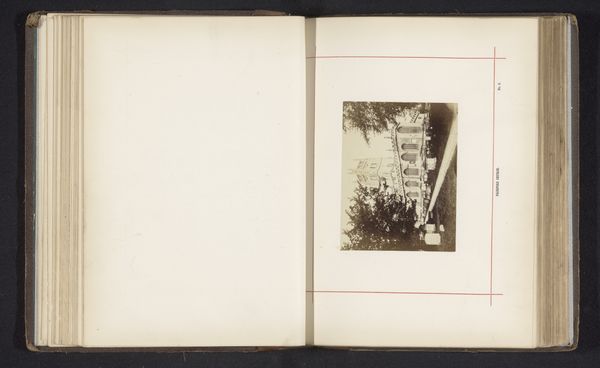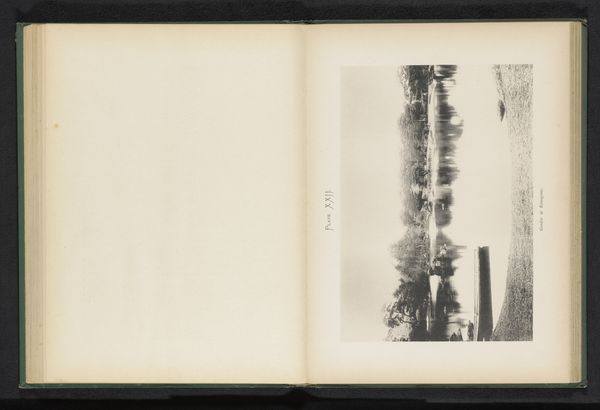
print, photography, albumen-print
#
aged paper
#
homemade paper
#
pictorialism
#
ink paper printed
# print
#
old engraving style
#
hand drawn type
#
landscape
#
photography
#
personal sketchbook
#
hand-drawn typeface
#
pen work
#
sketchbook drawing
#
sketchbook art
#
albumen-print
Dimensions: height 96 mm, width 144 mm
Copyright: Rijks Museum: Open Domain
Editor: This albumen print, “Remains in process of excavation” by Henry William Cave, circa 1896, is presented as an image within a personal sketchbook. It's intriguing how a documentary style blends with the intimate format of a sketchbook. What's your take on it? Curator: I see this albumen print as a compelling intersection of photographic technology, manual labor, and colonial enterprise. The albumen print itself was a relatively recent process, a kind of industrialization of image making. And we see the remains of a structure, evidence of manual excavation, all documented within what you correctly observe is the intimate, hand-bound form of a sketchbook. What does this juxtaposition suggest to you? Editor: I guess it makes me consider the labor behind both the creation of the image and the excavation itself. Was photography viewed as work then? Curator: Precisely! The very act of capturing this image – the selection of materials, the developing process, the printing – reflects the labor inherent in photography's material production. And that ties into the depiction of manual excavation. The two labors become linked. How does Cave’s framing within a sketchbook, something so portable and reproducible, play into the circulation of these images and the ideas they represent? Editor: So, it’s about how the photograph, as an object made through specific processes and consumed within a colonial context, tells a story about labor and control? The material object is key to interpreting the social and cultural context. Curator: Yes, exactly. The albumen print is not merely a window onto the scene but also evidence of the means of its production, embedded within networks of colonial power. Editor: That's really interesting. I wouldn’t have thought about the physical print being so closely tied to these wider concepts. Curator: It forces us to confront the materiality of representation itself, doesn't it? It's about uncovering layers of meaning through careful attention to the art object itself.
Comments
No comments
Be the first to comment and join the conversation on the ultimate creative platform.
